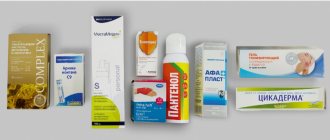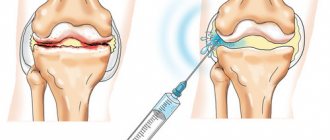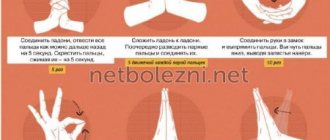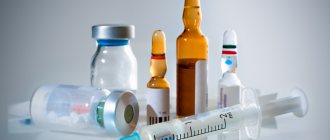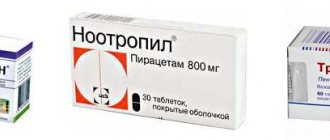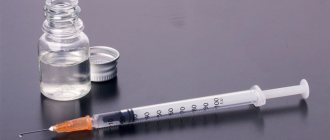This page has become the most popular on my site, and I understand that people come to it to get a specific answer to the question “how to treat back pain?” If you decide to go without a doctor, use the red flags to look for signs of dangerous pain.
You can take painkillers without examination only if you have taken this recommendation as carefully as possible and have not identified anything from the list of danger signs.
Despite the criticism of supporters of searching for the direct source of back pain (painful muscle nodules, sprained ligaments, joint damage), I remain a supporter of the absence of the need for detailed diagnostics in the absence of “red flags,” regardless of the anatomical structure involved, prognosis, treatment and prevention of pain in the back will not be different. Particular moments that lead to chronic pain and require special treatment (for example, long-acting steroid injections for pain associated with inflammatory joint damage) are extremely rare.
For my patients with acute back pain, I recommend treatment according to the following regimen:
(a) A heat compress on the area of pain (a heating pad or a bag of sand/cereals at a temperature of 42-45˚ C, duration of use 1-1.5 hours) and/or Meloxicam 15 mg, 1 tablet in the morning. Due to the high risk of developing ulcerative complications, simultaneous administration of Omeprazole 20 mg, 1 capsule, 40 minutes before dinner is recommended; course of treatment – 4 weeks. (b) One of the local anesthetics: - “Analgesic ointment” 50.0 (pharmacies of the KIT Pharma chain) or - a compress with Dimexide on the area of pain (every other day No. 5): mix equal parts of Dimexide (99.6 %); Lidocaine 2% and pure water (for the treatment of pain in the neck or back, 15-20 ml, pain in a small joint - 5 ml, large joint - 10-15 ml) - soak a napkin according to the size of the area of pain (for the treatment of pain in the neck and back, joint pain - the size of a palm), apply to the area of pain, cover with plastic wrap and a layer of cotton wool on top. After 10-15 minutes, assess the condition of the skin under the napkin. If there is redness, remove the compress; if the skin is in normal condition, keep it at 45-60′ (c) Recommendations for regimen and exercise for pain on the doctor’s website: https://bit.ly/neckopn (neck pain), https:// bit.ly/back-opn (back pain); educational material about back pain: https://bit.ly/back-treatment
In case of chronic pain, I add Gabapentin 300-1800 mg/day to the treatment regimen (there is no convincing evidence, personal observations indicate moderate effectiveness and high safety of the drug), a combination of duloxetine (60-120 mg/day) and tramadol 50-100 mg/day (at the beginning of treatment - regularly, subsequently - as an emergency drug; there is personal positive experience of using the combination in patients 80+ with chronic pain in the joints and spine, chronic back pain, there is personal experience - the drug significantly reduced muscle pain and made long-distance running more comfortable; the safety of duloxetine is worse than gabapentin, patients often report dizziness and pre-syncope).
Extremely rarely, when nothing else helps, I use Topiramate at a dose of 50-200 mg/day. There are isolated cases of successful use of the drug for the treatment of chronic back pain. The prescription of the drug is often accompanied by adverse events such as lethargy, dizziness, memory loss, and unsteadiness when walking.
Below is a review of the literature.
Analgesics and NSAIDs are effective in the treatment of acute back pain. According to the most common point of view, the prescription of centrally acting muscle relaxants increases the effectiveness of treatment, but is accompanied by a high risk of developing adverse events, primarily associated with the sedative effect of the drugs.
However, in a placebo-controlled study, Benjamin W., Andrew A., (2015) failed to demonstrate the effect of the addition of a centrally acting muscle relaxant (cyclobenzaprine) or a combination of paracetamol with an opioid analgesic (oxycodone) during treatment with naproxen.
There are a wider range of medications available for the treatment of chronic back pain, but clinical trial evidence for their benefit is less convincing.
Nonsteroidal anti-inflammatory drugs
Choice of drug
NSAIDs are effective in patients with low back pain, however, the improvement in the general condition of the patient associated with their use is insignificant. Paracetamol (acetaminophen) or NSAIDs are recommended as first-line drugs. The first, slightly inferior to NSAIDs in effectiveness, is cheaper and safer in most groups of patients (does not affect blood clotting or blood pressure regulation). For acute back pain in patients without an increased risk of adverse events, NSAIDs are prescribed for up to 4 weeks. No differences in the effectiveness of individual NSAID drugs have been shown in randomized clinical trials.
The most acceptable drugs are ibuprofen (200-400-600 mg up to 4 times a day), and naproxen (200-500 mg x 2 times a day), both drugs are well studied and are quite safe for short-term use. In our country, due to aggressive advertising, the prescription of selective COX-2 inhibitors - oxicams (meloxicam, lornoxicam), sulfonanilides (nimesulide) - is common. The presence of a large number of generics on the market makes these drugs accessible.
It is advisable to use drugs in minimal doses that produce a sufficient analgesic effect from the patient’s point of view. In the recommendation for taking the drug for each individual patient, indicate the permissible dosage range and maximum duration of use. To create realistic expectations, it is important to inform the patient that most often taking medications reduces pain, but does not eliminate pain completely. In most cases, in patients without concomitant affective disorders, the tolerance of back pain is satisfactory, the severity of the pain syndrome is moderate.
Security questions
Frequent use of NSAIDs and long courses of drug administration place great emphasis on patient safety. With short-term use, there are risks of damage to the gastrointestinal tract, adverse events from the cardiovascular system, blood system and allergic reactions:
Adverse events from the gastrointestinal tract
Damage to the gastrointestinal tract is the most common complication of taking NSAIDs. It has been shown that for every $1 spent on NSAID treatment, $0.66 to $1.25 is spent on treating gastrointestinal complications
Taking medications reduces the protective properties of the gastric mucosa. The mechanism of the ulcerogenic effect of NSAIDs is due to two independent mechanisms:
- local damage to the gastric mucosa;
- systemic depletion of cytoprotective prostaglandins. NSAIDs, as weak acids, are present in the acidic environment of gastric juice in the form of lipophilic neutral molecules. They slowly penetrate the epithelial cells of the stomach and accumulate in the neutral environment of the cytoplasm. The action of the drugs contributes to the disorganization of gastric surfactant, disrupts the composition of phospholipids, glycolipids and glycoproteins of epithelial cells, uncouples oxidative phosphorylation, causing energy deficiency in epithelial cells.
In the American College of Gastroenterology Lanza FL, Chan FK, Quigley EM, Practice Parameters Committee of the American College of Gastroenterology. Guidelines for prevention of NSAID-related ulcer complications. Am J Gastroenterol. 2009;104( 3):728.) the following risk assessment model is proposed:
Tablets for back pain
After relieving acute pain with injections, tablets are often preferred. They may have different dosages of active components, relate to analgesics, NSAIDs, muscle relaxants. The dose and type of drug are determined by the doctor; self-medication is prohibited.
Names of back pain pills for back pain:
- Ibuprofen;
- Diclofenac;
- Celebrex;
- Meloxicam;
- Ketanov;
- Baralgin.
NSAIDs in tablet form have frequent stomach side effects - pain, nausea, heartburn. To reduce the negative impact on the gastrointestinal tract, they are consumed after meals, and antiulcer medications are additionally prescribed.
Low risk
No risk factors
NSAIDs differ in the severity of their ulcerogenic effects.
Indomethacin has the highest risk of gastrointestinal complications (relative risk {RR} 2.25), followed by naproxen (RR 1.83), diclofenac (RR 1.73), piroxicam (RR 1.66), ibuprofen (RR 1.43), and meloxicam (OR 1.24).
A dose-dependent effect of the drugs was noted (Richy F, Bruyere O, Ethgen O, 2004):
Low-dose ibuprofen (RR 1.6, 95% confidence interval 0.8-3.2)
High-dose ibuprofen (RR 4.2, 95% confidence interval 1.8–9.8)
Low-dose naproxen (RR 3.7, 95% confidence interval 1.7-7.7)
Naproxen at high doses (RR 6.0, 95% confidence interval 3.0-12.2)
Low-dose indomethacin (RR 3.0, 95% confidence interval 2.2-4.2)
High-dose indomethacin (RR 7.0, 95% confidence interval 4.4-11.2)
Not included in this review, ketorolac also has a pronounced gastrotoxic effect. In one study (García Rodríguez LA, Cattaruzzi C, 1998), it was shown that the risk of developing adverse events from the gastrointestinal tract with the drug is 5.5 times higher than that of other NSAIDs. Therefore, the duration of taking the drug is limited to 5 days.
In Russia and abroad, the drug is available with a prescription.
Despite the possibility of early gastrotoxicity, in most cases it does not appear within several weeks of taking the drugs. The possibility of modifying risk factors depends on the conditions of medical care for the patient.
- Patients with a history of complicated or uncomplicated gastrointestinal ulcer disease are advised to undergo testing for H. pylori before prescribing NSAIDs or aspirin. If the result is positive, appropriate treatment is carried out (even in cases where it is assumed that the previous development of ulcers was associated with taking NSAIDs).
- It is necessary to use minimal doses of drugs, the course of treatment should be as short as possible.
- In patients with an average and high risk of complications from the gastrointestinal tract, the use of selective COX-2 inhibitors or NSAIDs in combination with antisecretory drugs: proton pump inhibitors (omeprazole 20 mg/day, esomeprazole 20 mg/day up to 6 weeks), H2 blockers is indicated -histamine receptors (ranitidine 150 mg/day once at night, famotidine 40 mg x 2 times a day). Both groups of drugs reduce the severity of dyspepsia in patients. Efficacy at recommended doses is similar.
- In patients with a high risk of complications from the gastrointestinal tract, selective COX-2 inhibitors may be prescribed in combination with antisecretory drugs
- Concomitant use of aspirin with COX-2 inhibitors completely eliminates the gastrointestinal safety benefits of the latter.
- Unexplained anemia, iron deficiency, severe dyspepsia, signs of gastrointestinal bleeding indicate a possible complication of taking NSAIDs. It is necessary to consider the possibility of performing esophagogastroduodenoscopy.
Patches for back pain
For serious back diseases, patches, like other local anesthetics, are ineffective, but they are suitable as an auxiliary therapy.
Patches for back pain are glued to the skin
The patches remain on the surface of the skin for up to 8-12 hours, so they provide a long-lasting analgesic effect.
Note! An alternative to injections of local anesthetics can be a lidocaine patch, which is suitable for patients with radiculitis, osteochondrosis, and neuralgia.
Table 1 Recommendations for the prevention of complications associated with taking NSAIDs
| Risk of gastrointestinal complications | |||
| Short | Moderate | High | |
| Low risk of cardiovascular complications | Monotherapy with NSAIDs (choosing a drug with the least ulcerogenic potential) | NSAID + proton pump inhibitor/misoprostol | If possible, alternative treatment or NSAIDs - selective COX-2 inhibitor + proton pump inhibitor / misoprostol |
| High risk of cardiovascular complications (low dose aspirin is indicated) | Naproxen + proton pump inhibitor/misoprostol | Naproxen + proton pump inhibitor/misoprostol | Avoid prescribing NSAIDs, including selective COX-2 inhibitors, use alternative treatment |
Another drug that has a sufficient gastroprotective effect is the synthetic prostaglandin E1 - misoprostol, but its use is limited by its high cost.
The protective effect of the H2-histamine receptor antagonist, famotidine, has been proven only in combination with ibuprofen. A combination drug was created, which is currently not available in Russia. However, both of its components can be purchased and taken separately. They are affordable.
It is necessary to inform the patient that even despite intense back pain, his health is not in danger. The vast majority of patients have a favorable prognosis: within 3 months, more than 90% of patients do not seek medical help again.
Less significant are complications from the urinary and central nervous systems, hepatotoxic effects of drugs:
Adverse events from the urinary system
All NSAIDs can have nephrotoxic effects. When taking drugs of this group, the following types of complications may develop: Development of acute renal failure due to spasm of renal vessels. Other mechanisms of organ damage are also possible. NSAIDs cause a moderate increase in arterial hypertension, reduce the effectiveness of antihypertensive drugs, and can cause electrolyte disturbances (hyperkalemia, hyponatremia and edema). Taking NSAIDs is associated with an increased risk of kidney cancer.
Adverse events from the cardiovascular system
All NSAIDs, both selective and non-selective, increase the risk of developing cardiovascular complications: clinical manifestations of coronary heart disease, heart failure, increased blood pressure, and the development of atrial fibrillation. Naproxen has the lowest risk of developing complications from the cardiovascular system. (Daniel H Solomon, MD, 2015). NSAIDs interact with all classes of antihypertensive drugs except calcium antagonists, reducing their effectiveness. Their use may increase blood pressure in patients (White WB. 2007). Safety issues are more relevant for patients with a high risk of cardiovascular complications (old age, long-term hypertension, constant use of antihypertensive drugs, diabetes mellitus); in patients with a low risk, they do not limit the use of drugs in this group.
Adverse events from the blood system
Neutropenia is a rare complication of taking NSAIDs and develops in less than 1% of patients; no risk factors for the development of this condition or association with taking individual drugs from this group have been established. The antiplatelet effect is associated with inhibition of COX-1, which leads to a decrease in the production of thromboxane A2. It is necessary to avoid taking NSAIDs in patients with thrombocytopenia (less than 50 x 109/l). Before surgery, drugs should be discontinued within 3-5 half-life periods. For most NSAIDs, the antiplatelet effect disappears 3 days after discontinuation. The antiplatelet effect of ibuprofen is eliminated 24 hours after discontinuation of the drug. Highly selective COX-2 inhibitors have little effect on platelet hemostasis. Concomitant use of NSAIDs and aspirin may reduce the antiplatelet effect of the latter. Interaction with warfarin leads to a significant increase in INR when taken simultaneously. More frequent monitoring of the indicator is required.
Allergic and pseudoallergic reactions
Pseudoallergic reactions associated with inhibition of COX-1 can be caused by taking aspirin and all (“crossover”) NSAIDs that inhibit COX-1: Piroxicam, Indomethacin, Ibuprofen, Naproxen, Ketoprofen, Diclofenac, Ketoralac, and less commonly, drugs with weakly expressed properties of COX inhibitors -1 — paracetamol; and even less often when using drugs that selectively inhibit COX-2, nimesulide, coxibs, oxicams; a dose-dependent effect was noted for these drugs. Allergic reactions to NSAIDs develop in the form of angioedema, urticaria or anaphylaxis. Cross-reactions to drugs with similar chemical structures are possible. If pseudo-allergic and allergic reactions to any of the NSAIDs develop, it is necessary to avoid taking all drugs in this group; as an alternative, use paracetamol in a single dose of no more than 650 mg.
Adverse effects from the respiratory system
When taking aspirin and other non-selective COX-1 blockers, it is possible to develop bronchospasm, decompensation of bronchial asthma and other obstructive bronchial lesions of inflammatory origin.
Adverse events from the hepato-biliary system
Cases of liver failure when taking NSAIDs are quite rare (3.7 per 100,000 patients taking drugs of this group). Transient slight increases in the activity of liver enzymes (less than 3 upper limits of normal) are not prognostic signs of the development of acute liver failure associated with the action of NSAIDs. Ibuprofen is the safest NSAID and has not shown severe liver damage in large studies. Along with paracetamol and aspirin, the drug is one of the best-selling over-the-counter drugs in the world. Newer NSAIDs, selective COX-2 inhibitors, oxycams and coxibs have a relatively low risk of toxicity. In rare cases, piroxicam can cause severe liver damage.
The drug Nimesulide was withdrawn from sale in a number of countries (Japan, Finland, Turkey, Israel, India, Sri Lanka, and later Ireland), and was never put on sale in the USA and Great Britain, due to a pronounced hepatotoxic effect in a series of clinical observations , however, various epidemiological studies do not confirm this information.
The European Medicines Agency (EMA) recommends only short-term use of the drug (15 days), at a dose not exceeding 200 mg/day (100 mg x 2 times a day) in adults. Taking into account all the data obtained, the Agency believes that the potential benefits of the drug, subject to restrictions, outweigh the potential risks.
The economic feasibility of monitoring liver enzyme activity in patients taking NSAIDs has not been established.
In case of an increase in activity by more than 3 times compared to the upper limit of normal, a decrease in the concentration of serum albumin, or an increase in INR, it is necessary to assume the hepatotoxic effect of NSAIDs.
Adverse skin effects
The risk of developing toxic epidermal necrolysis and Stevens-Johnson syndrome (malignant exudative erythema) when taking NSAIDs is 1 in 100,000. The highest risk is when taking piroxicam, the lowest is when taking diclofenac and ibuprofen.
Adverse effects from the nervous system
Elderly patients taking NSAIDs, especially indomethacin, may experience worsening cognitive impairment and the development of psychosis. Taking ibuprofen and naproxen is associated with the development of aseptic meningitis. In a small proportion of patients, taking NSAIDs is accompanied by the development of tinnitus. The complication is reversible after discontinuation of the drugs.
Ointments and gels for back pain
For sprains and muscle inflammation, it is recommended to use local remedies based on diclofenac sodium and other anti-inflammatory and analgesic components.
The pharmaceutical market is represented by a large assortment of creams, ointments and gels for back pain:
- Finalgon;
- Fastum gel;
- Dolobene;
- Dolgit cream;
- Apizartron;
- Voltaren Emulgel;
- Ketoprofen gel and others.
Ointments, creams and gels should not be applied to the affected surface of the skin where there are scratches, wounds or dermatological diseases. Before use, you should read the information about the methods of use in the instructions and find out the comments of your doctor. Although topical medications do not have systemic side effects, they should be used with caution by people with renal, liver and heart failure.
The average duration of treatment is 7-10 days, but not more than 2 weeks.
Summary
- NSAIDs are a relatively safe group of drugs,
- Most of the adverse events develop only with long-term use of the drugs.
- The most acceptable drugs are ibuprofen (200-400-600 mg up to 4 times a day), and naproxen (200-500 mg x 2 times a day), both drugs are well studied and are quite safe if prescribed in short courses (2-4 weeks) .
- Due to the similar effectiveness of all available agents, the choice in each individual case is determined by the safety profile of the drug and its cost.
- When prescribed, an assessment of the risk of developing complications from the gastrointestinal tract and cardiovascular complications in each patient is indicated. The frequency of the former is increased to a greater extent by the use of non-selective NSAIDs, the latter - by NSAIDs and selective COX-2 inhibitors.
- Due to the fact that NSAIDs have an antiplatelet effect, and their use is accompanied by a risk of developing thrombocytopenia, a complete blood count is indicated before starting treatment.
- Monitoring the activity of liver enzymes during treatment with NSAIDs is not required for each patient. Liver tests may be performed when there is initial liver injury or when acute injury is reasonably suspected.
- In patients with contraindications to the use of NSAIDs (a combination of a high risk of cardiovascular complications and adverse events from the gastrointestinal tract), it is advisable to use Paracetamol in a dose of 200-400 mg up to 2 times a day, for a course of up to 4 weeks. Another alternative to NSAIDs is the drug flupirtine (Katadolon). Both paracetamol and catadolone, when taken for a long time, especially in elderly patients, can have a hepatotoxic effect, including causing severe liver damage. On February 9, 2021, the Pharmacovigilance Risk Assessment Committee (PRAC) of the European Medicines Agency (EMA) recommended that the marketing authorization of flupirtine be withdrawn because, despite precautions, the drug has been associated in isolated cases with serious liver damage.
Table 2 Recommendations for choosing medications for back pain
| Group of drugs: | Acute back pain < 4 weeks | Subacute and chronic back pain ≥ 4 weeks |
| Paracetamol | + | + |
| NSAIDs | + | + |
| Centrally acting muscle relaxants | + | — |
| Tricyclic antidepressants | — | + |
| Benzodiazepines | + | + |
| Tramadol, opioids | + | + |
Injections for back pain
In case of exacerbation of osteochondrosis, lumbar radiculitis and other diseases of the spine, when the back hurts so much that it interferes with freedom of movement, it is necessary to alleviate the condition as quickly as possible. In such cases, injections are used. It is necessary to limit yourself to 1-2 injections per day so as not to exceed the daily dose. For example, the highest dosage for Diclofenac is 150 mg.
Injections for back pain are given into the gluteal muscle
You should pay attention to popular means:
- Diclofenac;
- Meloxicam;
- Ketonal.
Injection of the medicine ensures its rapid delivery to the body, to the site of the lesion, so after a short time any pain disappears.
Note! If the pain is unbearable and cannot be eliminated with NSAID injections, then lidocaine blockade is recommended. Relief is felt after a few minutes. One blockade may be enough.
Centrally acting muscle relaxants
According to systematic reviews, combined treatment with NSAIDs and centrally acting muscle relaxants is more effective than NSAID monotherapy. The use of muscle relaxants is accompanied by an increase in the frequency of adverse events, primarily general lethargy and drowsiness. The most studied drug is tizanidine. The drug is used in doses of 2-4 mg x 2 times a day. The most common adverse events are sedation and hypotension.
Benzodiazepine tranquilizers have a similar effect. Drugs in this group can be used in a hospital setting to enhance the effect of NSAIDs.
An integrated approach to the treatment of back pain
To get rid of diseases of the musculoskeletal system, drug therapy is not enough. It is important to change your lifestyle, include light physical activity, spend your free time actively, monitor your posture, give up bad habits and eat right.
People with chronic spinal diseases benefit greatly from physical therapy and physiotherapy. Let's consider effective auxiliary treatment methods.
Shpidonov Gennady Stanislavovich
Neurologist
Rostov State Medical University (neurology)
10 years of experience
Massage
Light professional massage movements can relieve muscle spasms, improve blood circulation and accelerate tissue regeneration in the affected area.
Physiotherapy
A set of exercises is selected individually for patients, taking into account their current condition. Proper loading on the back helps to get rid of pain.
Physiotherapy
The course of treatment consists of 10-15 procedures, but the first positive changes can be noticed after the first session. Magnetic therapy, shock wave and ultrasound therapy, galvanization, electrophoresis, electromyostimulation, darsonvalization are effective.
Acupuncture
With the help of acupuncture, any back pain is treated; there are practically no contraindications. In addition to pain relief, the following effects can be achieved:
- reduce muscle spasm;
- improve blood circulation;
- accelerate the restoration of damaged tissues.
Wearing orthopedic products
The use of special orthopedic devices is indicated for injuries, curvature of the spine, osteochondrosis with protrusions and other serious diseases. Corsets and other products should be selected by a doctor in accordance with the diagnosis.
Taping
With the help of taping, you can reduce pain after injuries, reduce the load on the spine, and restore muscle tone.
Taping is often used to treat lumbar pain
Causes of pain
There is a division of causes that cause pain - they are natural and pathological.
Natural causes include muscle fatigue resulting from physical activity.
The list of pathological causes is much wider:
- osteochondrosis - can be lumbar, cervical, thoracic;
- presence of intervertebral hernia;
- damage to the joints of the spine;
- radiculitis;
- rheumatism;
- osteoarthritis.
The most common cause of back pain is damage to the skeletal muscles in acute and chronic forms. The development of the disease occurs due to pinching, squeezing and hypothermia in the cold season.
Paravertebral blockade
This procedure is performed only by a specialist on an outpatient basis, due to the risk of damage to the nerve trunks (paravertebral block) and the spinal cord (paravertebral block). The purpose of the procedure is to eliminate back pain by introducing a solution of medications (local anesthetics, steroid hormones) into the epidural space of the spinal cord. This achieves an immediate analgesic effect, which helps even with unbearable pain in the back, lower back and lower extremities (symptomatic and pathogenetic therapy of back pain).
This procedure, if performed incorrectly, can lead to serious complications. Therefore, this treatment method is used only for severe and unbearable pain. In all other cases, it is better to limit yourself to safer methods.
For paravertebral blockades, it is permissible to use a more complex combination of drugs - NSAIDs, glucocorticosteroids, local anesthetics, chondroprotectors, vitamin B complex. The injection is performed through the muscles running along the spine until it touches the transverse process of the vertebra, 2 cm away from the center of the spine. The roots of the spinal cord pass in close proximity to the tip of the needle, where the drug is injected. The procedure can be performed under the control of an ultrasound machine.
Acute pain after a fall or injury
A lower back bruise after a fall or blow is the most common back injury, from which even the most careful and cautious people are not immune. The high-risk group includes athletes, people engaged in heavy physical labor (loaders, storekeepers), and children. You can also get a lower back injury if you fall on slippery surfaces (wet floors, ice) or in public transport during emergency braking.
No one is safe from accidental falls
Before providing assistance to a bruised victim, you must ensure that there are no fractures or dislocations. The difference between a bruise and a fracture is damage only to soft tissues (skin, musculo-ligamentous apparatus), manifested mainly by swelling, hematomas and bruises (a symptom of damage to capillaries and small blood vessels).
Symptoms of pain with hernias
There are markers, or “special flags,” that suggest that pain is associated specifically with damage to the musculoskeletal system and is discogenic in nature. These are the following symptoms and signs:
- sharp and acute pain appears either at the time of severe physical activity or immediately after it;
- acute pain has the character of an electric current, it is sudden, shoots in the lower back, most often in the leg, right down to the ankle joint;
- pain leads to a sharp restriction of mobility in the lumbar spine, and the patient takes a specific anti-pain position. In this pose, the slightest movement is eliminated, and breathing becomes less deep;
- pain associated with damage to the intervertebral discs is of a so-called radicular nature. This means that the slightest shock to the lower back leads to a sharp increase in pain in the form of lumbago, which is called lumbago. This is laughing, coughing, sneezing, trying to change body position or pushing in the toilet due to great need;
- later a permanent, aching component is added, associated with the reaction of the deep muscles to the appearance of an inflammatory focus caused by a hernia.
All these symptoms clearly indicate that the cause of the pain was discogenic complications of osteochondrosis - protrusion or hernia in the lumbar spine, in which these defects occur most often. Why does pain occur? Why does it develop?

![Rice. 2. Relationship between dose of diclofenac (D), naproxen (Nap) and etoricoxib (Eto) and effect size in osteoarthritis [3]](https://ms-pi.ru/wp-content/uploads/ris-2-zavisimost-mezhdu-dozoj-diklofenaka-d-naproksena-nap-i-330x140.jpg)
